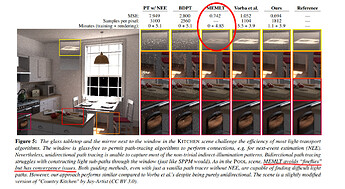No I didn’t mean exposure, they are different.
Here is the part of the path guiding paper:
Also, render engines like Cycles render in open domain, or scene linear state, which means the intensity info it generates is radiometric and the highest end of it’s range is infinity.It doesn’t make sense to have it adjusted to correct result only when you convert it to close domain PNG etc, what about EXRs then? It just doesn’t make sense.
EDIT: Actually now I think of it, I might be confused about MLT and MEMLT, I now remember I have read somewhere that MLT has temporal flickering issue, not sure though.
EDIT: confirmed my previous edit:
Anyway I think my previous conlcusion still stands
